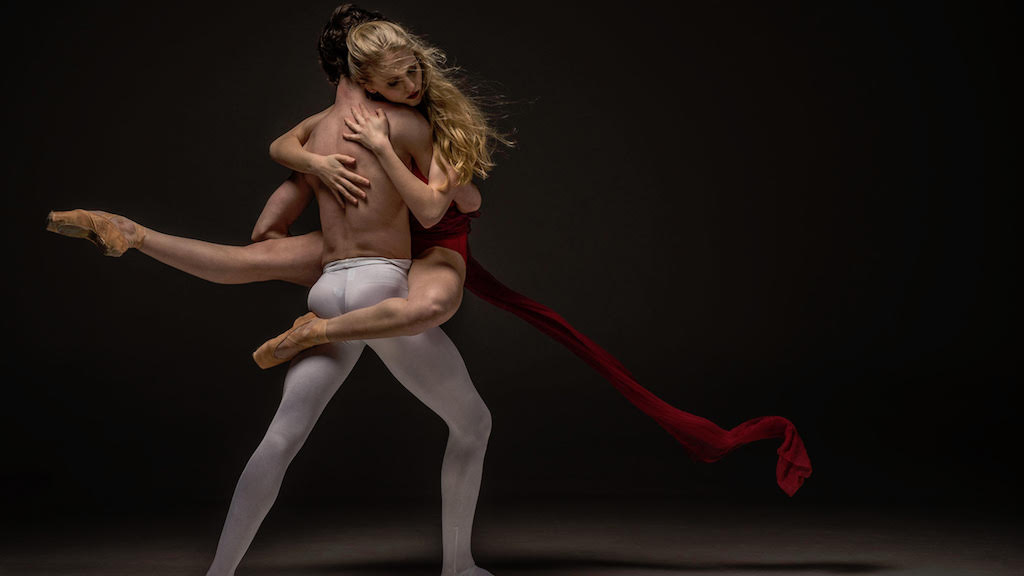By Chris Clark, Enlivening Edge Partner, for EE Magazine
A look inside EE’s lively, sometimes clumsy, ongoing dance with our self-management system
When George Pór, Lead Link for Enlivening Edge, returned in October from Encode.org’s partner meetup in Amsterdam, he reported feeling moved to ecstasy by his experience of their governance meeting. In his article he wrote:
“ During that [Governance] process, sometimes I felt as if I were witnessing the eloquent dance of a dharma combat, the ancient Buddhist art in which what is emerging from the exchange is not only a refined truth. It is also the participants’ growing competence to respond to challenges thrown at them, from a perspective larger than their ‘small self.’ Yet, the dance was not devoid of passions, emotions, sympathies, aversions, and other attributes of being human. They just didn’t take over what the collaborative shaping of the organization’s work needed.”
Within Enlivening Edge, the ongoing debate seems to be about whether or not keeping this “small self” from taking a more active role in our more formal organizational meetings is a good thing. What Holacracy offers as a solution to the conundrum of messy human interaction — a set of rules designed to keep the “small self” from muddying the waters of collective action (in other words, making the distinction between role vs. soul) — is regarded by some within EE as no solution at all. Full disclosure: I’m one of them.
And yet there is no denying that Holacracy is an incredibly useful tool for bootstrapping self-management and awareness of purpose, what proponents call an “evolutionary algorithm,” with the potential to liberate organizations from the command-and-control paradigm and “Green consensus swamp” alike.
Just not without consequences.
George wrote in our #tribespace Slack channel:
“Producing the tremendously rich content of EE Magazine that is attracting 1,000’s of readers was not a small a thing, but in the process we didn’t allow our whole humanness to participate in our collaboration. That’s why I cherish wholeheartedly the work of people who are focusing on strengthening the tribe space.”
A Structure of Belonging
This “tribe space” is our current solution to one of Holacracy’s glaring inadequacies: it is conspicuously silent about wholeness. Proponents say this is not a problem. Holacracy wasn’t designed for this purpose. But the consequence of adopting Holacracy without consciously defining a structure of belonging is that Holacracy becomes the de facto structure of belonging. In that context, the web of human relationships becomes…
“…kind of dormant, waiting for people to energize it. And if people tend to be accustomed to first-tier ways of relating, then that’s probably how they’ll energize the tribe space.” ~ Michael Stern, EE Partner
The structure, in other words, drives lots of “organizing” behavior. But not much else.
EE faces a number of challenges that make cultivating a rich tribe space more difficult. As an entirely volunteer-led organization, our availability to one another fluctuates with our personal outside responsibilities. As a distributed team, we are largely bound to our computer screens. We are rarely ever together in one place, where the flow of energy can unfold spontaneously. Besides this, EE is pursuing its Evolutionary Purpose via a number of diverse projects and loosely-defined partnerships. Many of these projects bear little immediate relationship to one another. Many of us are seldom even in the same Zoom room. Getting a bead on the “whole” of EE can be quite challenging.
And in some ways large and small, Holacracy seems to compound that challenge:
“In small teams like ours — my impression is that the amount of ‘structuring’ and ‘formalizing’ of roles, etc., is quite an ‘overkill’ in terms of what would actually suffice to get the work done in a good way if we just took care to relate in ways that is building trust by being transparent and addressing tensions along the way. From a learning perspective, I am really pleased to be experiencing Holacracy by using it and getting to understand it that way — so for me that is where the value of using it is.” ~ Bjorn Uldall, EE Partner
This “overkill” has shown up in various ways. People looking to shed roles belabor a Lead Link who is already over-saturated (and why did we need to concretize these roles in the first place?) The meetings, while not particularly painful, have certainly not ushered many of us into ecstasy. (We are thinking now about how to rely on them less.) Delineations of roles can cognitively narrow the awareness of those who hold them, limiting creative individual action.
And at the same time, there is no doubt that working with the nitty-gritty of Holacracy has helped us cultivate certain habits. Adding the litmus test of “Is this safe enough to try?” and evaluating the validity of objections to our collective repertoire has liberated us from ego-bound consensus. And people are empowered by their roles. The “organization” per se has benefited from our practice. But we also sense it is not the end of the journey.
Transcending the Operating System
“My sense is that Holacracy is something to be learned, and THEN TRANSCENDED IF there is readiness to move on. I think it is a skillset WITHIN a worldview, and being fully into Teal requires going through both [learning and then transcending and having available], as related to Holacracy.
“Myself, I think Hola has a HUGE Orange and Blue shadow, and is NOT fully suitable for the Teal worldview, BUT it is not something we can healthfully SKIP OVER. We need to put in our time, maturing THROUGH it. So even if meetings are boring or uncomfortable or seem stifling to some, the learnings form a strong FOUNDATION for more fluid ways of group decision-making. Hence, I do not complain nor avoid, EE’s Holacracy learning curve.” ~ Lia Aurami, EE Partner
Is Enlivening Edge ready to transcend Holacracy? Perhaps not yet. Our Holacracy coach, Eric Babinet, shared a brilliant resource from the Holacracy.org website, in which several levels of self-management “maturity” are delineated for Holacratic practice. Among them is this gem, a “key indicator” demonstrating the advanced practice of governance:
[In advanced governance] some proposals attempt significant re-engineering, even to the circle structure itself, and challenge deep assumptions about how the work should be structured.
This challenging of deep assumptions is where Enlivening Edge finds itself now. Spring Cheng, one of the gatherers of our Tribe Space, writes:
“’Holacracy is a system with its roots in the West. Other ways of approaching the very nature of “doing” are possible…’ said Chris. That is one of the primary drivers for me to be involved in this work, to “translate” the Eastern way into this field. But the translation is beyond just language, as the difference in eastern and western thinking runs so much deeper than the language layer. And yet, I feel the voice from the East is so important in this conversation about evolution of social systems and planetary changes.” ~ Spring Cheng, EE Collaborator
What happens when “organization” and “tribe” are refracted into two separate spaces? Much the same as when the traditional Orange organization utters the nonsensical claim, “It’s not personal, it’s just business.” The abstraction of the “small self” from the ongoing work of the organization is yet another separation, another amputation from the Whole.
Is this the Holacracy shadow?
I’ve been practicing bold honesty lately. Rather than keeping my tensions and judgments hidden, I’ve allowed them to come forward. The impact of these self-revelations on a group often totally surprises me. What I’ve learned from this practice is that the “small self” — our judging mind and changeable heart —has a vital role to play in the flow of life energy within a group. My little self-revelations, when voiced from a place of vulnerability, have had the effect of dramatically galvanizing some truly meaningful conversations.
Sometimes “task” needs to be interrupted by “shadow” in order for us to find ourselves in the wider space of “meaning.” And from that space, that transformative, alchemical space, sometimes our understanding of the task itself changes. Our being informs our doing.
But Holacracy trains us to compartmentalize. And in a situation like Enlivening Edge, rather than having everyone involved in the flow from task to relationship to meaning and vise versa, it’s easy to opt in for one kind of meeting over another. I myself haven’t been to a tactical meeting in months.
Can a tool like Holacracy have a shadow? Maybe, and maybe not. But beyond being merely a tool for organizing work, Holacracy is a system. And systems drive behavior. They recursively shape our mental models. Systems constrain what we think and what we pay attention to. As goes the proverb: if all you have is a hammer, everything looks like a nail. The problem isn’t inherent in the tool, but in the relationship between the tool, its user, and the context. The hammer, in fact, suggests a context. If you put one in somebody’s hands, they’ll most likely assume that what’s expected of them next is a little construction. They’ll go looking for nails.
Put Holacracy in someone’s hands, and they’ll go looking for tensions that can be processed. They’ll start creating roles and holding meetings. Their contextual awareness shifts towards “organization,” while their availability to other lenses can be diminished.
This was best demonstrated to me in a recent EE tribe space gathering, when the team began to wander into some open territory — some big topics and difficult questions, around this very issue.
“Let’s setup a meeting for us to deal with this conflict,” it was suggested. “We’ll deal with all that stuff there.”
A mental model is being expressed here. It’s a model of human cooperation that sees personal tension and organizational tension as separate. It’s a model reinforced by Holacracy. Not without some gains! And some big ones. But not without some losses, either.
Imagine if human experience were categorized and organized according to thought and feeling. From thoughts, our feelings arise. From our feelings come our thoughts. This reciprocal dance is within and is us. The field of consciousness gives rise to its many differentiated forms spontaneously. The result? An intelligence.
Might a collective intelligence be possible only to the extent we allow our collective doing and being, thinking and feeling to so arise?
Wherein lies the potential for us to transform our practice into something more whole, more soul-full?
“…if people have experience of more profound and generative ways of relating, the tribe space becomes more than non-optional, it becomes primary, in the sense that we move down the left side of Scharmer’s U (co-sensing the future that is emerging from the collective field) before we move up the right side (prototyping and crystallizing that future as forms and structures).
So the whole enterprise, including whatever governance and tactical decisions, are an expression of and in service to the impulse which is being sourced by and birthed through the collective intelligence of the whole system.” ~ Michael Stern, EE Partner
My sense is that this impulse is enlivened, as Michael says, through the collective intelligence of the whole system — while simultaneously coming into spontaneous contact with the individual feeling, the juice, the electric impulse of each human being. Designing our next step, can we bring together what our system tends to separate? Can we create structures that lend themselves to comparison not with crystals, but with the temporary form of the dancer?
Or are we throwing out the soulful baby with the Greenish bathwater?
Next Steps
My summation is necessarily biased. Where we in EE are headed next is an intentional conversation for finding our personal blindspots. We know we’re sticking with Holacracy. Now the question is, how can we use its own ruleset to address its challenges?
And how is this internal-EE conversation echoing in the wider community of next stage organizations? How does it show up in you?
For the moment, I think Jan says it best how we show up to the challenge:
“So, with all of our ‘divine dissatisfactions’ we’re growing and learning together, strengthening parts and wholes, maturing into self-management and living into our evolutionary purpose. I say we’re succeeding…yay!” ~ Jan Sage, EE Partner
Featured Image/graphic link added by Enlivening Edge Magazine.
Featured Image/graphic link caption: The dance between structure and essence





Thanks for this insight into some of the discussions happening within the EE team. It resonated in particular because Holacracy has always made me a bit uneasy and I’ve had difficulty pinpointing why.
It occurs to me now that, at a very high level, this may stem from (what I perceive as) a central goal of Holacracy: to make it easier and faster for organizations to adopt self-management (in part by providing “off the shelf” solutions). Of course, the Orange part of me loves that idea — and yet it seems to contradict the core Teal notion that HOW it is done is often far more important than WHAT is done or how quickly it is done. For example, the ownership and responsibility generated in the process of co-creation is often more impactful than the objective merits of the solution itself. (See: Peter Block)
So perhaps an even broader way of framing the issues you’ve observed with Holacracy is that by shortcutting its way to a solution, it bypasses some of the vital ownership-, growth-, and community-building functions that a slower, more imperfect process of creating a solution together would have supported. Is this a fundamental downside of ANY technique to speed up or short-cut growth? The tradeoff for getting something more quickly is that it’s less robust, less integrated, and less whole?
Robin, did you practice Holacracy or heard read about it?I am involved with a number of organizations using Holacracy, but never experienced that its goal would be to make faster for them to adopt that way of learning. In fact, it’s not uncommon that the adoption process takes 2 years.
I’m laughing. Holacracy wasn’t birthed “off the shelf.” It is the result of a VERY long co-creative process, YEARS, with different teams and organizations in different arenas. It is the result of a VERY long slow imperfect process and lots of winnowing and morphing. And that still goes on; Holacracy is not a finished product, never will be.
AND, Robin, that all could be irrelevant to your point. Maybe every place that tries to invent its own process of distributed-power decision-making would end up with something robust and generate lots of ownership, wholeness, and integration along the way. More likely, based on how long and how many iterations it took to arrive at the current Holacracy, a group would quit in despair.
AND, of course, there are alternatives to Holacracy which ARE the result of groups experimenting.
If we look at the scale of humanity as the learner, or even the scale of next-stage organizations as the learner, then learning from one another makes sense, doesn’t it? Why re-invent the wheel? Do we buy clothes ready-made or do we make our own from cotton bolls and sheared wool, or plastic?
As George and Chris and many of our EE Magazine authors have indicated, Holacracy requires a long learning period, and adaptation, and is a “psychoactive” (my term) practice, so even for groups not inventing their own process, there is a huge amount of “creating a solution together.” There is huge ownership, growth, and community-building which goes on even in the adopting/learning process. That’s the usual experience.
In other words, Robin, both you and Chris are raising questions whose value seems to me to be in contemplating their many facets, not in arriving at an answer. I’ve learned just by attempting this response! Thank you for your thoughtfulness!